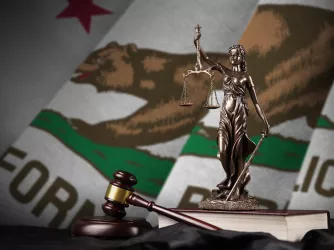Table of Contents
At the University of Minnesota, reports of ‘bias’ often include political speech

Last week, a Minneapolis Star Tribune report on the University of Minnesota’s “Bias Response and Referral Network” highlighted the debate over whether — or to what extent — bias reporting systems may chill free speech on college campuses. The Star Tribune’s report follows FIRE’s own report on bias reporting systems and, just as we did at dozens of universities across the country, utilizes public records laws to get a closer look at what gets reported and how the university responds.
The log of bias incidents provided to the Star Tribune in response to a public records request, embedded below, reveals that many of the reported incidents involve some form of political speech.
And while many incidents involve speech that does not raise First Amendment concerns — graffiti, or speech by university administrators, for example — a significant portion of the incidents involve core political speech. This is consistent with bias-reporting trends FIRE has seen across the country. Reported incidents at UMN include:
- The words “Make Rapists and Racists afraid” were reported after being written on a sidewalk outside of a fraternity. The fraternity had been criticized and investigated for “an incident involving derogatory and disparaging comments.”
- A student organization was reported for hitting a piñata effigy of President Donald Trump. This incident was referred to the university’s Student Unions and Activities administrators.
- “Racist/anti-Muslim comments” were reported after being posted on a social media page not operated by the university, resulting in administrators in the admissions department “reach[ing] out to the students whose conduct was called into question for educational purposes.”
- Someone reported a blog post critical of a since-deleted Facebook post that, according to the report, featured a graphic created by Students for Justice in Palestine which was altered by unknown persons to include a swastika as a means of criticizing SJP’s promotion of a boycott of Israel. The matter was referred to the university’s Student Unions and Activities administrators, who were to reach out to both the pro-Palestine and pro-Israel student organizations.
- The phrase “Build the Wall” was reported after it was chalked on campus. The university’s Facilities Management was contacted and reported back “this is … a free speech situation.”
- A student reported “student groups that the student believes are anti-Semitic because they support Palestine and have engaged in anti-Semitic sentiments.” The student was referred to the university’s Office of Equal Opportunity and Affirmative Action, which investigates complaints about discrimination.
- Someone reported a poster hung on a bridge “above a fraternity panel stating that men in fraternities are more likely to commit sexual assault than other college men.” The matter was referred to the university’s Student Unions and Activities administrators and administrators from the Office for Fraternity & Sorority Life.
So, with a system that encourages students to report incidents of protected speech, how does the university proceed?
The university’s Bias Response and Referral Network website indicates that the team, to its credit, considers “whether the [reported] incident has potential free speech or academic freedom implications” — a question explicitly included in the protocol for evaluating reported incidents. And, in responding, the team may “provide educational information to parties involved in the bias incident report about the University’s commitment to equity, inclusion, academic freedom, and freedom of expression.”
These are welcome acknowledgements by the university that it is cognizant of the possibility that a reporting system can have a chilling effect on free speech. Indeed, in at least some instances, like when a student reported political bumper stickers, the records indicate that the team responded by discussing the importance of freedom of speech and the ability to espouse differing views, including those that offend. The University of Minnesota’s team deserves credit for encouraging offended listeners to respond with more speech.
Other instances, however, suggest that the team sometimes refers complaints about protected speech to other administrators. It’s unclear whether those administrators are similarly cognizant of the free speech issues that may be implicated in any response. And, importantly, the records provided here do not indicate one way or the other how other administrators at the university responded to referred reports. But forwarding reports of protected speech to other administrators to handle may end up causing more problems than it solves if that referral is not accompanied by information concerning the inherent First Amendment issues, or those administrators are not aware of them.
The Star Tribune’s report is worth reading. We’ll continue to explore bias reporting systems in the coming weeks.
If you’re a journalist using public records laws to examine your local bias reporting system, we’d be thrilled to take a look at what you uncover. Contact us at fire@thefire.org.
Recent Articles
FIRE’s award-winning Newsdesk covers the free speech news you need to stay informed.

O holy fight: New Hampshire Satanic Temple statue threatened by more than vandals

California and other states are rushing to regulate AI. This is what they’re missing

One day after FIRE lawsuit, Congress passes changes to filming permits in national parks
